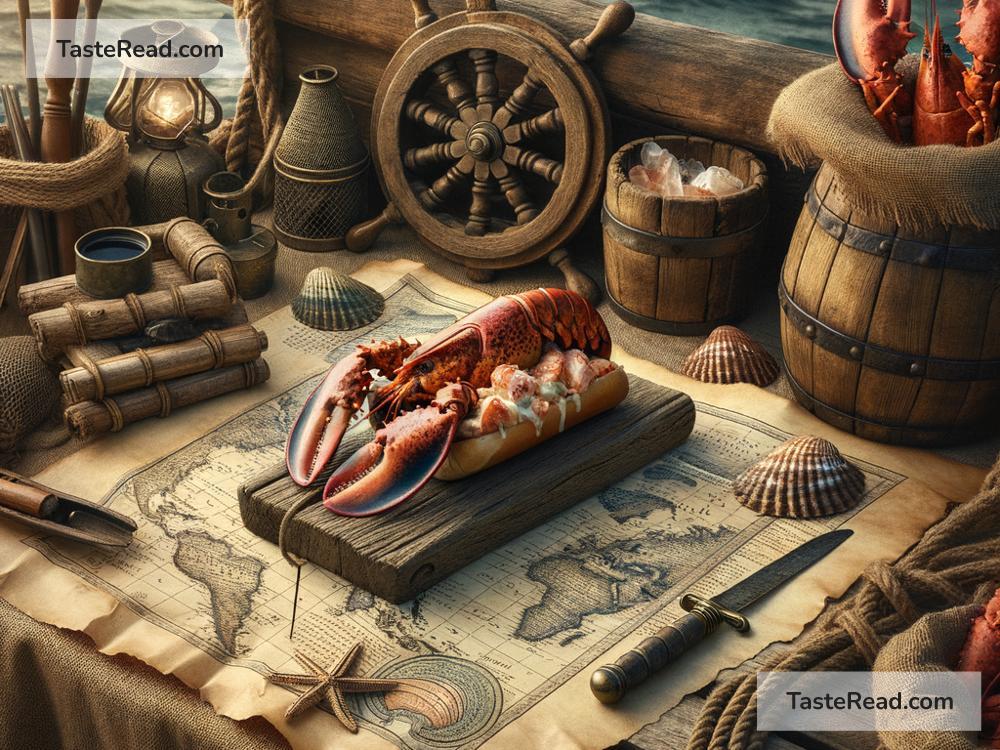The Origins of the First Lobster Roll in Ancient Tales
When we bite into a delicious lobster roll today, we might not stop to wonder about its history. But the origins of this tasty sandwich go far beyond roadside diners and beachside food stands. Some stories suggest that the lobster roll has roots in ancient tales, where lobster was neither an everyday food nor a simple meal—it was a symbol of survival, creativity, and even celebration.
Lobster in Ancient Times
Long before lobster became a delicacy served at fancy restaurants, it was considered food for common people or even prisoners. In ancient coastal communities, lobsters were abundant and easy to catch. They were often seen as “sea bugs” and were not appreciated the way they are today. Indigenous tribes, such as the Wabanaki people of the northeast, are believed to have been among the first to eat lobster. They cooked lobsters by burying them in hot coals or roasting them over open fires, pairing them with wild grains and herbs.
As European settlers arrived in the Americas, they adopted the practice of eating lobster as a cheap source of protein. Early settlers would boil lobsters and eat them as stew or alongside bread. While these meals were basic, they helped set the stage for the lobster roll we enjoy today.
Lobster and Bread: A Simple Pairing
The idea of pairing lobster with bread is surprisingly ancient. Bread has been a staple food for civilizations worldwide for thousands of years because it is versatile and easy to make. Lobster, on the other hand, was often mixed with spices or fats to preserve it, especially when fresh seafood was harder to come by. Combining lobster with bread allowed people to make a convenient, portable meal that could be carried on long journeys.
Some historians speculate that fishermen were the first to create a version of the lobster roll. After a long day at sea, they might have combined leftover lobster with bread to make a quick, satisfying meal. While these early “lobster rolls” were far simpler than the ones we know today, the idea was born: lobster, tucked into bread, easy to eat on the go.
The First Lobster Roll in Folklore
There are also fascinating stories from old tales that link lobster rolls to creativity and adaptability during tough times. One such tale speaks of an ancient fisherman facing a great storm. He had caught several lobsters earlier in the day, but the weather made it impossible to return home. Stranded on the shore, he had no tools to cook a proper meal.
Using what he had, the fisherman boiled lobster in seawater and packed it into flatbread he carried with him. The meal became his lifeline, giving him enough energy to survive the storm and return safely. When he shared this makeshift dish with his community, they hailed it as a clever and tasty way to enjoy lobster. As time went on, this humble combination evolved into something legendary.
While there is no evidence to confirm that this story is true, it showcases the importance of resourcefulness and simplicity in the origins of food. Whether lobster rolls were born of necessity or creativity, the idea captured the imagination and eventually spread to many cultures.
Modern Lobster Roll: A Timeless Classic
The lobster roll as we know it today first became popular in New England, particularly in Connecticut and Maine. It is said that the first modern lobster roll was served at Perry’s, a seafood restaurant in Milford, Connecticut, in the 1920s. Perry’s version included warm lobster meat, tossed in butter, and served in a split-top bun. This creation set the standard for the lobster roll, leading to regional variations that include mayonnaise, celery, and other ingredients.
In Maine, lobster rolls are typically served cold, mixed with mayonnaise, whereas the Connecticut style sticks to warm, buttered lobster. Regardless of the preparation, lobster rolls remain a symbol of summer and coastal living, enjoyed at picnics, seafood shacks, and beachside restaurants.
Why the Lobster Roll Endures
The lobster roll’s simplicity is part of its charm. It’s easy to make and easy to eat, yet feels luxurious because lobster is the star ingredient. Lobster rolls also evoke a sense of nostalgia and connection to the sea, reminding people of sandy beaches, ocean breezes, and the rich history of coastal living.
While ancient tales of lobster rolls may be rooted more in imagination than fact, they give us a sense of how food evolves over time. What started as a humble way to use leftovers has transformed into a beloved dish that carries the flavors of both history and the ocean.
So the next time you enjoy a lobster roll, take a moment to appreciate its journey. From ancient shores and fishermen’s creativity to modern restaurants and picnic tables, the lobster roll tells a story of adaptability, community, and the timeless love of good food. And while its exact origins may remain a mystery, one thing is certain: the lobster roll is here to stay.


